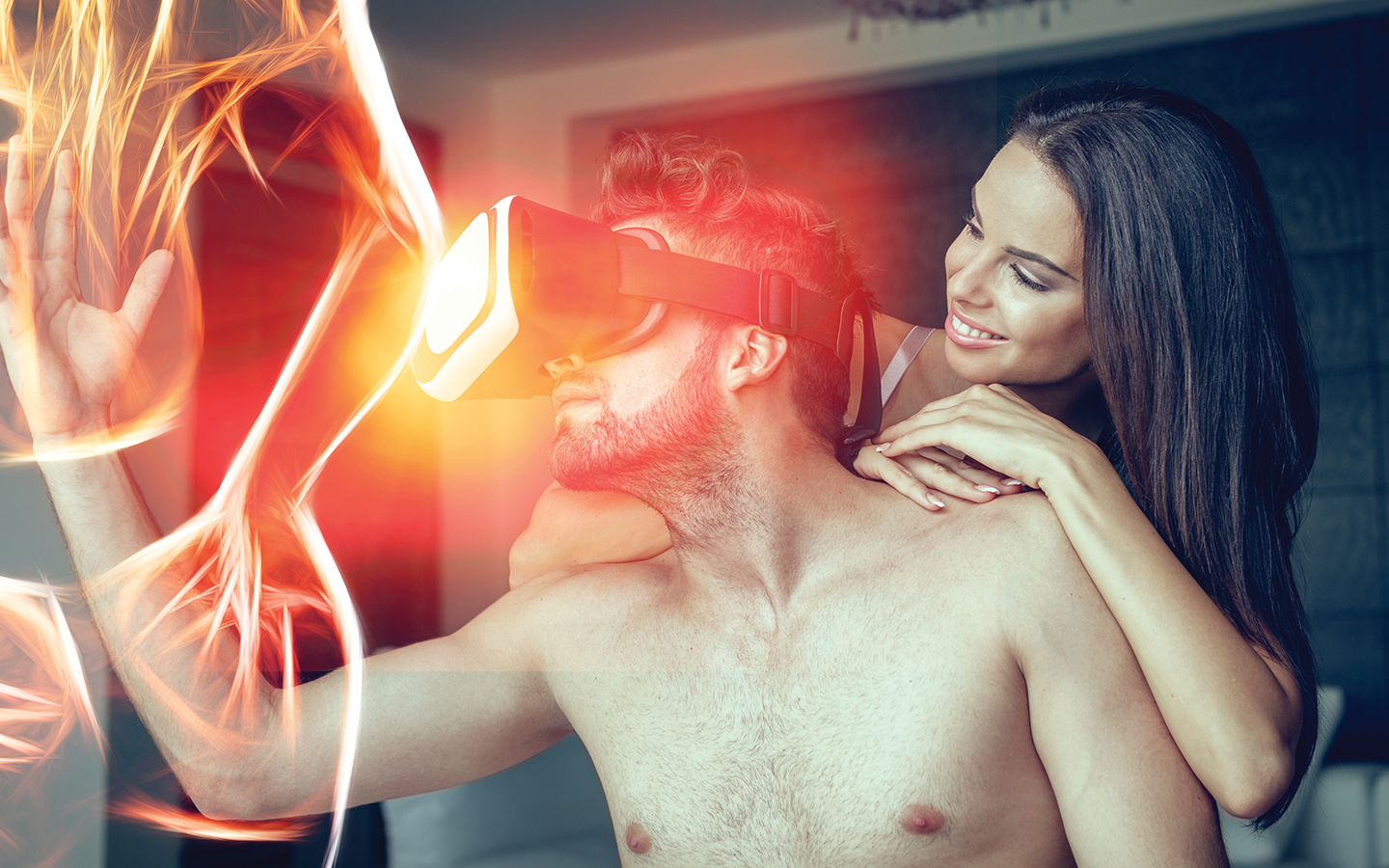[{"id":"246","link":"https:\/\/strip-vr.com\/blog\/guide-to-vr-adult-entertainment\/","name":"guide-to-vr-adult-entertainment","thumbnail":{"url":"https:\/\/strip-vr.com\/blog\/wp-content\/uploads\/2025\/03\/unlocking-the-virtual-intimacy-a-comprehensive-guide-on-what-is-vr-sex-2.jpg","alt":""},"title":"A Beginner\u2019s Guide to VR Adult Entertainment: What You Need to Know","author":{"name":"admin","link":"https:\/\/strip-vr.com\/blog\/author\/admin\/"},"date":"Mar 6, 2025","dateGMT":"2025-03-06 05:40:44","modifiedDate":"2025-03-06 05:40:44","modifiedDateGMT":"2025-03-06 05:40:44","commentCount":"0","commentStatus":"closed","categories":{"coma":"<a href=\"https:\/\/strip-vr.com\/blog\/category\/uncategorized\/\" rel=\"category tag\">Uncategorized<\/a>","space":"<a href=\"https:\/\/strip-vr.com\/blog\/category\/uncategorized\/\" rel=\"category tag\">Uncategorized<\/a>"},"taxonomies":{"post_tag":"<a href='https:\/\/strip-vr.com\/blog\/tag\/best-vr-strip-clubs\/' rel='post_tag'>best VR strip clubs<\/a><a href='https:\/\/strip-vr.com\/blog\/tag\/exotic-vr-performers\/' rel='post_tag'>exotic VR performers<\/a><a href='https:\/\/strip-vr.com\/blog\/tag\/immersive-strip-shows\/' rel='post_tag'>immersive strip shows<\/a><a href='https:\/\/strip-vr.com\/blog\/tag\/interactive-striptease\/' rel='post_tag'>interactive striptease<\/a><a href='https:\/\/strip-vr.com\/blog\/tag\/private-vr-shows\/' rel='post_tag'>private VR shows<\/a><a href='https:\/\/strip-vr.com\/blog\/tag\/virtual-reality-adult-entertainment\/' rel='post_tag'>virtual reality adult entertainment<\/a><a href='https:\/\/strip-vr.com\/blog\/tag\/vr-strip-shows\/' rel='post_tag'>VR strip shows<\/a>"},"readTime":{"min":3,"sec":25},"status":"publish","content":"Virtual Reality (VR) has revolutionized the way we experience entertainment, and the adult industry is no exception. For those new to VR adult entertainment, the"},{"id":"243","link":"https:\/\/strip-vr.com\/blog\/how-vr-is-redefining-intimacy-emotional-and-sensory-connections\/","name":"how-vr-is-redefining-intimacy-emotional-and-sensory-connections","thumbnail":{"url":"https:\/\/strip-vr.com\/blog\/wp-content\/uploads\/2025\/03\/vr_sex_header.png","alt":""},"title":"How VR is Redefining Intimacy: A Deep Dive into Emotional and Sensory Connections","author":{"name":"admin","link":"https:\/\/strip-vr.com\/blog\/author\/admin\/"},"date":"Mar 6, 2025","dateGMT":"2025-03-06 05:36:43","modifiedDate":"2025-03-06 05:36:43","modifiedDateGMT":"2025-03-06 05:36:43","commentCount":"0","commentStatus":"closed","categories":{"coma":"<a href=\"https:\/\/strip-vr.com\/blog\/category\/uncategorized\/\" rel=\"category tag\">Uncategorized<\/a>","space":"<a href=\"https:\/\/strip-vr.com\/blog\/category\/uncategorized\/\" rel=\"category tag\">Uncategorized<\/a>"},"taxonomies":{"post_tag":"<a href='https:\/\/strip-vr.com\/blog\/tag\/best-vr-strip-clubs\/' rel='post_tag'>best VR strip clubs<\/a><a href='https:\/\/strip-vr.com\/blog\/tag\/exotic-vr-performers\/' rel='post_tag'>exotic VR performers<\/a><a href='https:\/\/strip-vr.com\/blog\/tag\/immersive-strip-shows\/' rel='post_tag'>immersive strip shows<\/a><a href='https:\/\/strip-vr.com\/blog\/tag\/interactive-striptease\/' rel='post_tag'>interactive striptease<\/a><a href='https:\/\/strip-vr.com\/blog\/tag\/private-vr-shows\/' rel='post_tag'>private VR shows<\/a><a href='https:\/\/strip-vr.com\/blog\/tag\/virtual-reality-adult-entertainment\/' rel='post_tag'>virtual reality adult entertainment<\/a><a href='https:\/\/strip-vr.com\/blog\/tag\/vr-strip-shows\/' rel='post_tag'>VR strip shows<\/a>"},"readTime":{"min":3,"sec":47},"status":"publish","content":"Virtual Reality (VR) is no longer just a tool for gaming or entertainment\u2014it\u2019s becoming a powerful medium for redefining intimacy and human connection. By blending"},{"id":"240","link":"https:\/\/strip-vr.com\/blog\/the-future-of-virtual-reality-in-adult-entertainment-trends-and-innovations\/","name":"the-future-of-virtual-reality-in-adult-entertainment-trends-and-innovations","thumbnail":{"url":"https:\/\/strip-vr.com\/blog\/wp-content\/uploads\/2025\/03\/howdoesvrpornwork.jpg","alt":""},"title":"The Future of Virtual Reality in Adult Entertainment: Trends and Innovations","author":{"name":"admin","link":"https:\/\/strip-vr.com\/blog\/author\/admin\/"},"date":"Mar 6, 2025","dateGMT":"2025-03-06 05:33:43","modifiedDate":"2025-03-06 05:33:43","modifiedDateGMT":"2025-03-06 05:33:43","commentCount":"0","commentStatus":"closed","categories":{"coma":"<a href=\"https:\/\/strip-vr.com\/blog\/category\/uncategorized\/\" rel=\"category tag\">Uncategorized<\/a>","space":"<a href=\"https:\/\/strip-vr.com\/blog\/category\/uncategorized\/\" rel=\"category tag\">Uncategorized<\/a>"},"taxonomies":{"post_tag":"<a href='https:\/\/strip-vr.com\/blog\/tag\/best-vr-strip-clubs\/' rel='post_tag'>best VR strip clubs<\/a><a href='https:\/\/strip-vr.com\/blog\/tag\/exotic-vr-performers\/' rel='post_tag'>exotic VR performers<\/a><a href='https:\/\/strip-vr.com\/blog\/tag\/immersive-strip-shows\/' rel='post_tag'>immersive strip shows<\/a><a href='https:\/\/strip-vr.com\/blog\/tag\/interactive-striptease\/' rel='post_tag'>interactive striptease<\/a><a href='https:\/\/strip-vr.com\/blog\/tag\/private-vr-shows\/' rel='post_tag'>private VR shows<\/a><a href='https:\/\/strip-vr.com\/blog\/tag\/virtual-reality-adult-entertainment\/' rel='post_tag'>virtual reality adult entertainment<\/a><a href='https:\/\/strip-vr.com\/blog\/tag\/vr-strip-shows\/' rel='post_tag'>VR strip shows<\/a>"},"readTime":{"min":4,"sec":15},"status":"publish","content":"Virtual Reality (VR) has been a game-changer across various industries, and adult entertainment is no exception. As technology continues to evolve, VR is pushing the"},{"id":"235","link":"https:\/\/strip-vr.com\/blog\/choose-vr-strip-shows-over-traditional-clubs\/","name":"choose-vr-strip-shows-over-traditional-clubs","thumbnail":{"url":"https:\/\/strip-vr.com\/blog\/wp-content\/uploads\/2024\/12\/vr-strip-shows.jpg","alt":"vr strip shows"},"title":"Top 5 Reasons to Choose VR Strip Shows Over Traditional Clubs","author":{"name":"admin","link":"https:\/\/strip-vr.com\/blog\/author\/admin\/"},"date":"Dec 27, 2024","dateGMT":"2024-12-27 04:45:33","modifiedDate":"2024-12-27 04:45:33","modifiedDateGMT":"2024-12-27 04:45:33","commentCount":"0","commentStatus":"closed","categories":{"coma":"<a href=\"https:\/\/strip-vr.com\/blog\/category\/uncategorized\/\" rel=\"category tag\">Uncategorized<\/a>","space":"<a href=\"https:\/\/strip-vr.com\/blog\/category\/uncategorized\/\" rel=\"category tag\">Uncategorized<\/a>"},"taxonomies":{"post_tag":"<a href='https:\/\/strip-vr.com\/blog\/tag\/best-vr-strip-clubs\/' rel='post_tag'>best VR strip clubs<\/a><a href='https:\/\/strip-vr.com\/blog\/tag\/exotic-vr-performers\/' rel='post_tag'>exotic VR performers<\/a><a href='https:\/\/strip-vr.com\/blog\/tag\/immersive-strip-shows\/' rel='post_tag'>immersive strip shows<\/a><a href='https:\/\/strip-vr.com\/blog\/tag\/interactive-striptease\/' rel='post_tag'>interactive striptease<\/a><a href='https:\/\/strip-vr.com\/blog\/tag\/private-vr-shows\/' rel='post_tag'>private VR shows<\/a><a href='https:\/\/strip-vr.com\/blog\/tag\/virtual-reality-adult-entertainment\/' rel='post_tag'>virtual reality adult entertainment<\/a><a href='https:\/\/strip-vr.com\/blog\/tag\/vr-strip-shows\/' rel='post_tag'>VR strip shows<\/a>"},"readTime":{"min":4,"sec":9},"status":"publish","content":"Imagine stepping into a world where every sultry glance, every teasing move, and every whispered word is designed exclusively for you. Virtual Reality (VR) strip"},{"id":"230","link":"https:\/\/strip-vr.com\/blog\/evolution-vr-strip-clubs-future-immersive-entertainment\/","name":"evolution-vr-strip-clubs-future-immersive-entertainment","thumbnail":{"url":"https:\/\/strip-vr.com\/blog\/wp-content\/uploads\/2024\/12\/strip-club-1024x683-1.webp","alt":"VR Strip Clubs"},"title":"The Evolution of Strip Clubs: From Traditional Venues to Virtual Reality Experiences","author":{"name":"admin","link":"https:\/\/strip-vr.com\/blog\/author\/admin\/"},"date":"Dec 27, 2024","dateGMT":"2024-12-27 03:25:36","modifiedDate":"2024-12-27 03:27:35","modifiedDateGMT":"2024-12-27 03:27:35","commentCount":"0","commentStatus":"closed","categories":{"coma":"<a href=\"https:\/\/strip-vr.com\/blog\/category\/uncategorized\/\" rel=\"category tag\">Uncategorized<\/a>","space":"<a href=\"https:\/\/strip-vr.com\/blog\/category\/uncategorized\/\" rel=\"category tag\">Uncategorized<\/a>"},"taxonomies":{"post_tag":""},"readTime":{"min":3,"sec":49},"status":"publish","content":"Strip clubs have always been a seductive escape\u2014a world of dim lights, alluring performances, and tantalizing encounters. But now, a new era is here, and"},{"id":"227","link":"https:\/\/strip-vr.com\/blog\/virtual-reality-strip-club-a-favorite-of-apple-vision-pro\/","name":"virtual-reality-strip-club-a-favorite-of-apple-vision-pro","thumbnail":{"url":"https:\/\/strip-vr.com\/blog\/wp-content\/uploads\/2024\/03\/pexels-igor-starkov-3806244-scaled.jpg","alt":""},"title":"Virtual Reality Strip Club - a favorite of Apple Vision Pro and iPhone users","author":{"name":"admin","link":"https:\/\/strip-vr.com\/blog\/author\/admin\/"},"date":"Jul 10, 2024","dateGMT":"2024-07-10 08:32:32","modifiedDate":"2024-07-10 08:38:06","modifiedDateGMT":"2024-07-10 08:38:06","commentCount":"0","commentStatus":"closed","categories":{"coma":"<a href=\"https:\/\/strip-vr.com\/blog\/category\/uncategorized\/\" rel=\"category tag\">Uncategorized<\/a>","space":"<a href=\"https:\/\/strip-vr.com\/blog\/category\/uncategorized\/\" rel=\"category tag\">Uncategorized<\/a>"},"taxonomies":{"post_tag":""},"readTime":{"min":6,"sec":33},"status":"publish","content":" London, United Kingdom - July 8, 2024 - StripVR the Virtual Reality Strip Club, is an innovative virtual reality platform that has been transforming"},{"id":"220","link":"https:\/\/strip-vr.com\/blog\/should-i-buy-an-apple-vision-pro-stripvr\/","name":"should-i-buy-an-apple-vision-pro-stripvr","thumbnail":{"url":"https:\/\/strip-vr.com\/blog\/wp-content\/uploads\/2024\/03\/Fx4uqbyXgAYu3Wb.jpg","alt":"buy an Apple Vision Pro"},"title":"Should I buy an Apple Vision Pro? StripVR","author":{"name":"admin","link":"https:\/\/strip-vr.com\/blog\/author\/admin\/"},"date":"Jun 26, 2024","dateGMT":"2024-06-26 19:33:04","modifiedDate":"2024-06-26 19:33:04","modifiedDateGMT":"2024-06-26 19:33:04","commentCount":"0","commentStatus":"closed","categories":{"coma":"<a href=\"https:\/\/strip-vr.com\/blog\/category\/uncategorized\/\" rel=\"category tag\">Uncategorized<\/a>","space":"<a href=\"https:\/\/strip-vr.com\/blog\/category\/uncategorized\/\" rel=\"category tag\">Uncategorized<\/a>"},"taxonomies":{"post_tag":""},"readTime":{"min":2,"sec":59},"status":"publish","content":"Should i buy an Apple Vision Pro? Well the AVP is a great headset but in (virtual) reality you don't need it yet and there"},{"id":"215","link":"https:\/\/strip-vr.com\/blog\/best-strip-club-near-me-stripvr\/","name":"best-strip-club-near-me-stripvr","thumbnail":{"url":"https:\/\/strip-vr.com\/blog\/wp-content\/uploads\/2024\/03\/artem-labunsky-0va1MYAcE-s-unsplash-scaled.jpg","alt":"Best Strip Club Near Me kiny bonday bdsm show"},"title":"Best Strip Club Near Me ? StripVR","author":{"name":"admin","link":"https:\/\/strip-vr.com\/blog\/author\/admin\/"},"date":"Jun 6, 2024","dateGMT":"2024-06-06 14:23:49","modifiedDate":"2024-06-06 14:27:16","modifiedDateGMT":"2024-06-06 14:27:16","commentCount":"0","commentStatus":"closed","categories":{"coma":"<a href=\"https:\/\/strip-vr.com\/blog\/category\/uncategorized\/\" rel=\"category tag\">Uncategorized<\/a>","space":"<a href=\"https:\/\/strip-vr.com\/blog\/category\/uncategorized\/\" rel=\"category tag\">Uncategorized<\/a>"},"taxonomies":{"post_tag":""},"readTime":{"min":2,"sec":28},"status":"publish","content":"Are you asking where is the Best Strip Club Near Me\u00a0 is? We all want that perfect Strip Club experience but maybe there's just not"},{"id":"65","link":"https:\/\/strip-vr.com\/blog\/what-is-the-best-adult-vr-site\/","name":"what-is-the-best-adult-vr-site","thumbnail":{"url":"https:\/\/strip-vr.com\/blog\/wp-content\/uploads\/2024\/03\/AdobeStock_65029742-scaled.jpeg","alt":"apple vision pro porn on StripVR Gorgeous, seductive go-go dancers posing in a nightclub StripVR virtual reality stripper virtual reality strip club experience vr stripper pov stripper porn pov stripper experience gta stripclub videos gta6 stripclub gta6 strip club video where best strip club experience near me VR without a headset vr porn no headset vr porn movies best vr porn sexlikereal vr porn hottest strippers"},"title":"What is the Best Adult VR site?","author":{"name":"admin","link":"https:\/\/strip-vr.com\/blog\/author\/admin\/"},"date":"Mar 17, 2024","dateGMT":"2024-03-17 18:41:56","modifiedDate":"2024-06-06 13:29:39","modifiedDateGMT":"2024-06-06 13:29:39","commentCount":"0","commentStatus":"closed","categories":{"coma":"<a href=\"https:\/\/strip-vr.com\/blog\/category\/uncategorized\/\" rel=\"category tag\">Uncategorized<\/a>","space":"<a href=\"https:\/\/strip-vr.com\/blog\/category\/uncategorized\/\" rel=\"category tag\">Uncategorized<\/a>"},"taxonomies":{"post_tag":""},"readTime":{"min":2,"sec":9},"status":"publish","content":"What is the best Best Adult VR site for lap dances and stripper content? It's StripVR of course. What is StripVR? StripVR is a multi"},{"id":"49","link":"https:\/\/strip-vr.com\/blog\/apple-vision-pro-porn-it-took-people-24hrs-to-find-it\/","name":"apple-vision-pro-porn-it-took-people-24hrs-to-find-it","thumbnail":{"url":"https:\/\/strip-vr.com\/blog\/wp-content\/uploads\/2024\/03\/AdobeStock_645863465-scaled.jpeg","alt":"apple vision pro porn on StripVR Gorgeous, seductive go-go dancers posing in a nightclub"},"title":"Apple Vision Pro Porn - it took people 24hrs to find it","author":{"name":"admin","link":"https:\/\/strip-vr.com\/blog\/author\/admin\/"},"date":"Mar 5, 2024","dateGMT":"2024-03-05 14:01:05","modifiedDate":"2024-03-17 18:21:58","modifiedDateGMT":"2024-03-17 18:21:58","commentCount":"0","commentStatus":"closed","categories":{"coma":"<a href=\"https:\/\/strip-vr.com\/blog\/category\/uncategorized\/\" rel=\"category tag\">Uncategorized<\/a>","space":"<a href=\"https:\/\/strip-vr.com\/blog\/category\/uncategorized\/\" rel=\"category tag\">Uncategorized<\/a>"},"taxonomies":{"post_tag":""},"readTime":{"min":2,"sec":1},"status":"publish","content":"With the glory of advancements of tech, comes the glory hole of the human brain. And the newest digital glory hole is Apple Vision Pro"},{"id":"23","link":"https:\/\/strip-vr.com\/blog\/stripvr-the-virtual-reality-strip-club\/","name":"stripvr-the-virtual-reality-strip-club","thumbnail":{"url":"https:\/\/strip-vr.com\/blog\/wp-content\/uploads\/2024\/02\/StripVR-Banner-Our-videos-Recovered.png","alt":"virtual reality strip club vr strip club metaverse strip club decentraland strip club sexy vr pov porn virtual reality pov porn StripVR the virtual reality strip club experience vr stripper vr pov stripper stripz vr stripzvr pov porn pov stripper pov stripclub experience virtual reality strip club vr strip club metaverse strip club decentraland strip club sexy vr pov porn virtual reality pov porn Hot Strippers best strippers in USA hottest strippers in the world ai porn ar porn vr porn hot Virtual reality sex games Virtual Reality Strip Club"},"title":"StripVR - the Virtual Reality Strip Club","author":{"name":"admin","link":"https:\/\/strip-vr.com\/blog\/author\/admin\/"},"date":"Feb 29, 2024","dateGMT":"2024-02-29 22:29:41","modifiedDate":"2024-03-07 23:12:47","modifiedDateGMT":"2024-03-07 23:12:47","commentCount":"0","commentStatus":"closed","categories":{"coma":"<a href=\"https:\/\/strip-vr.com\/blog\/category\/uncategorized\/\" rel=\"category tag\">Uncategorized<\/a>","space":"<a href=\"https:\/\/strip-vr.com\/blog\/category\/uncategorized\/\" rel=\"category tag\">Uncategorized<\/a>"},"taxonomies":{"post_tag":""},"readTime":{"min":1,"sec":55},"status":"publish","content":"StripVR is a unique Virtual Reality Strip Club that is open 24hrs a day 7 days a week and has no geographical boundaries. Without the"},{"id":"8","link":"https:\/\/strip-vr.com\/blog\/stripvr-pov-strip-club-experience\/","name":"stripvr-pov-strip-club-experience","thumbnail":{"url":"https:\/\/strip-vr.com\/blog\/wp-content\/uploads\/2024\/02\/gs014080-frankie-pale-outfit-d-1.mov2021-01-28-09-59-25.392.jpg","alt":"StripVR ultimate Pov strip club experience strippers metaverse stripper metaverse strip club metaverse sex decentraland strip club vr stripper pov stripper StripVR the virtual reality strip club experience vr stripper vr pov stripper stripz vr stripzvr pov porn pov stripper pov stripclub experience virtual reality strip club vr strip club metaverse strip club decentraland strip club sexy vr pov porn virtual reality pov porn Hot Strippers best strippers in USA hottest strippers in the world ai porn ar porn vr porn hot Virtual reality sex games"},"title":"StripVR POV Strip Club Experience","author":{"name":"admin","link":"https:\/\/strip-vr.com\/blog\/author\/admin\/"},"date":"Feb 29, 2024","dateGMT":"2024-02-29 21:05:39","modifiedDate":"2024-03-05 14:43:42","modifiedDateGMT":"2024-03-05 14:43:42","commentCount":"0","commentStatus":"closed","categories":{"coma":"<a href=\"https:\/\/strip-vr.com\/blog\/category\/uncategorized\/\" rel=\"category tag\">Uncategorized<\/a>","space":"<a href=\"https:\/\/strip-vr.com\/blog\/category\/uncategorized\/\" rel=\"category tag\">Uncategorized<\/a>"},"taxonomies":{"post_tag":""},"readTime":{"min":2,"sec":7},"status":"publish","content":"StripVR is the POV Strip Club Experience you can enjoy in Virtual Reality on any device. This game changing Platform means no need for a"}]
